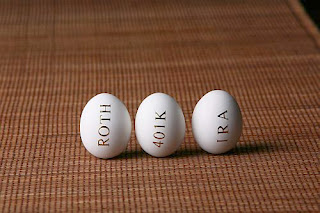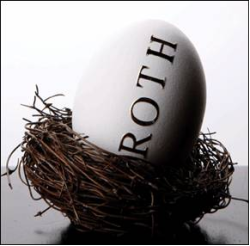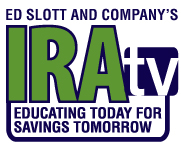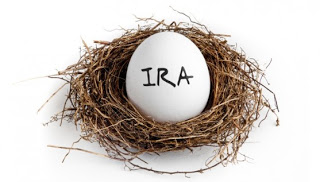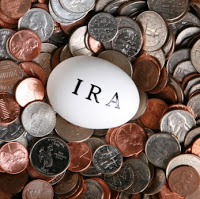It's fitting and all. School is in session or about to begin for many, so this week's
Slott Report Mailbag provides the syllabus for IRAs 101, answering consumer questions on some of the IRA nuts-and-bolts you and your financial team must know to properly open, manage and distribute from an IRA.
As
always, we stress the importance of working with a competent, educated
financial advisor to keep your retirement nest egg safe and secure.
Find one in your area at this link.
1. Can I contribute to an IRA or Roth IRA on behalf of my spouse who does not work or who makes less than the contribution limits?
Answer:
Yes, you can contribute on behalf of a non-working spouse. The contribution rules are the same for the non-working spouse as they are for the working spouse. You must have earned income in order to make a contribution. The safe harbor definition of earned income is W-2 income. You can contribute the amount of your earned income or the contribution limit, whichever is less. Any taxpayer with earned income can make an IRA contribution with the following two exceptions. If you are age 70 ½ or older during the year, you cannot make a traditional IRA contribution. If your income exceeds certain limits you will not be able to make a Roth IRA contribution. The income limits will increase each year for inflation. See
IRS Publication 590 for the current contribution and income limits (you could also visit
www.IRAhelp.com/2013). If you are age 50 or over you are eligible to make an additional catch-up contribution in the amount of $1,000.
2. Do I have to take distributions from my traditional IRA?
Answer:
YES. An IRA, SEP or SIMPLE owner must begin taking distributions in the year they turn age 70 ½. It does not matter if you are still working or if you do not want to touch the money, you still must take a required distribution. Your IRA custodian is required to notify IRS that you have to take a distribution, but they are not required to tell IRS how much you should withdraw. The custodian is required to tell you how much you should withdraw or they must offer to do the calculation for you. You will get that letter from your IRA custodian in January each year.
A non-spouse IRA beneficiary who is named on the beneficiary form (not one who inherits through the estate) must generally begin taking distributions in the year after the IRA owner’s death although some beneficiaries may have only 5 years to distribute the entire IRA. A spouse beneficiary (one who does not move the IRA funds into an IRA in their own name) does not have to start taking distributions until the IRA owner would have been age 70 ½. However, an IRA custodian can limit the distribution options for a beneficiary. You should check the IRA agreement for each account you inherit to see what your distribution options are for that account. A non-person beneficiary (estate, charity, etc.) and a trust beneficiary have special distribution rules. See
IRS Publication 590 or the IRA account agreement form for more information on the distribution rules for beneficiaries.
Any required distribution that is not taken is subject to a 50% penalty of the amount not taken and is reported on
IRS Form 5498 for the year the distribution was missed.
3. Can I name a trust as the beneficiary of my IRA or Roth IRA?
Answer:
Yes, you can name a trust as the beneficiary of your IRA or Roth IRA. BUT, do not do this unless you understand all of the ramifications of having a trust instead of an individual inheriting the IRA. Always consult with an IRA expert advisor before taking this step. NEVER, NEVER, NEVER move your IRA assets into the trust or re-title your IRA into the name of the trust. Both of those actions are taxable events and you will owe income tax on the entire balance in your IRA, and you will no longer have an IRA!! The trust should simply be named as the beneficiary on the beneficiary form.
4. I just inherited an IRA or Roth IRA from my spouse. What do I do now?
Answer:
Under the tax code you have three options, but your IRA custodian may limit these options. You will need to check with the custodian to see what your options are.
1. You can leave the IRA where it is and remain a beneficiary. This is generally not recommended. When you start taking distributions, they will be accelerated and your beneficiaries may not be able to stretch distributions over their lives when they inherit from you. However, it could be beneficial for a younger spouse who will need funds from the IRA to live on before attaining age 59 ½. Distributions from the inherited IRA will not be subject to the 10% early distribution penalty. Required distributions will begin in the year the account owner (not you) would have attained age 70 ½ or in the year after death if the owner was already 70 ½.
2. You can leave the IRA where it is and have it retitled in your own name and social security number. Some IRA custodians may not allow you to do this, but it is a simple way for you to get the IRA in your own name. The account is treated as if it had always been yours and distributions to you will begin when you turn age 70 ½ or in the year after death of the account owner if you are already age 70 ½.
3. You can move the funds to an IRA in your own name. This can be either a new account or an IRA that you already had in your name. If you are under the age of 59 ½, any funds you take out of an account you own will be subject to the 10% early distribution penalty. The account is treated as if it had always been yours and distributions to you will begin when you turn age 70 ½ or in the year after death of the account owner if you are already 70 ½.
Whatever option you use, always be sure to name your own beneficiaries on the account you have inherited. Any required distributions that are missed will be subject to the 50% penalty and are reported on
IRS Form 5498 for the year the distribution was missed.
- By Joe Cicchinelli and Jared Trexler





